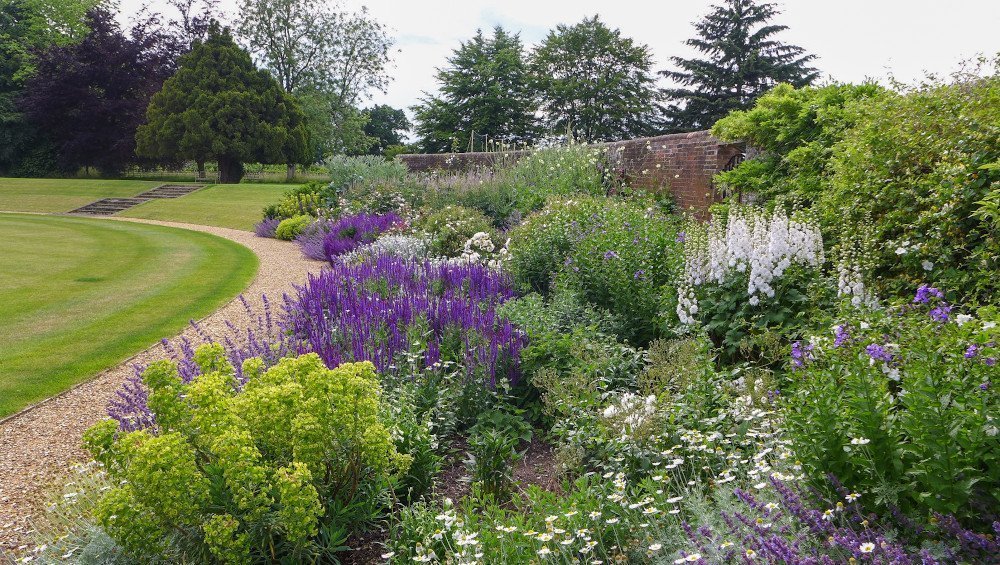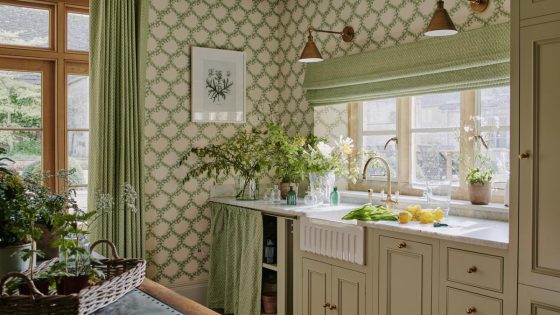To reinvigorate or relandscape? This is a question I am often asked by clients. To totally relandscape an area is quite an undertaking in terms of time and resources and may not always be the correct approach. If there is already a good underlying structure, with some careful thought, it may be possible to simply reinvigorate the existing garden. With the latter in mind, I find it useful to focus on four elements that successfully revitalise a tired landscape.
Less is more
Ruthlessly considering whether existing borders and garden features are actually required is a good starting point. For example, a long, mixed, overgrown border full of bindweed and ground elder, skirting a boundary, may, in fact, be hiding the most wonderful view. In this case, it would make sense to remove most of the planting, retaining only one or two large trees or shrubs to frame the newly discovered view. In removing the border, you will have reduced ongoing maintenance and benefit from the borrowed view.
With older properties, where the gardens have been developed in a piecemeal manner, one often encounters incongruous plants and hard landscaping that detract from the spirit and atmosphere of the place. Simply removing these can transform and refresh the garden.
Right plant, right place
To quote Beth Chatto: ‘Give your plant the growing conditions it desires, and it will reward you – tenfold.’
Simply planting the right plants in the right places will ensure they thrive and grow happily to maturity, each plant fully exhibiting its individual shape, form, foliage, and flowers.
During my encounters, I often come across struggling plants that will never prosper or have been severely and brutally pruned to prevent them from growing any bigger and therefore will never reach their full potential.
By undertaking a thorough review of the existing planting, moving plants as required to correct positions, and entirely removing those plants that will never flourish because of incorrect soil or site conditions, the remaining plants will provide the best possible show.
Succession and companion planting
As well as ensuring the right plant is in the right place, I always consider how plants will best get along as ‘neighbours.’ There is little point in planting a border where the intention is to achieve ongoing colour throughout the year if all the plants flower in June. Similarly, planting a highly invasive plant next to a delicate one will often result in the invasive plant dominating.
Thinking about planting in this way will ensure pleasing results and can make a huge difference to the overall garden. For example, a scheme for a north-facing border could be as simple as Hydrangea ‘Annabelle’ underplanted with hellebores and white narcissi. The show begins in January with the flowering hellebores, followed by a carpet of white narcissi in April, clothed by the emerging lime-green leaves of the hydrangeas, culminating in the white hydrangea flowers during the summer months. There is a continuous succession of interest, and all these plants grow happily together.
Landscape management
Finally, I consider ongoing maintenance. So often, I encounter time being spent on unnecessary tasks, whereas those tasks that make a huge difference to how the garden will appear the following year are neglected.
For example, is continuous leaf blowing in the autumn really necessary when that precious time could be put to better use carefully training and tying in your espalier fruit trees, so that they look like a work of art over the winter months and flower much better the following year?
An audit of ongoing maintenance not only ensures your garden looks its best but can also save time and cost.
Thanks. Nick Tripp, Founder, Taylor Tripp. For more information, head to their website here.
© 2025 Middleton Advisors Our advice papers address top-level questions that are often raised over the course of our client relationships. This paper is not intended to offer binding advice and you should not proceed with any investment decision on the basis of the advice contained herein. We recommend that you undertake personalised consultation with Middleton or another professional advisor. Information accurate at publication date of January 2025.







